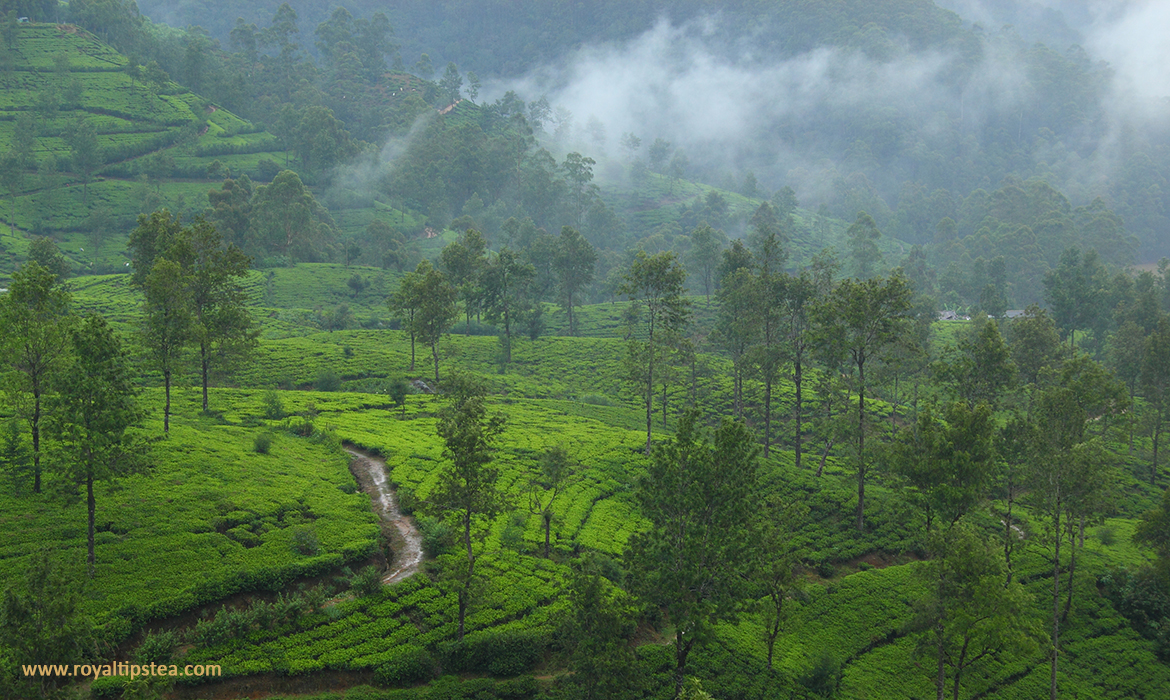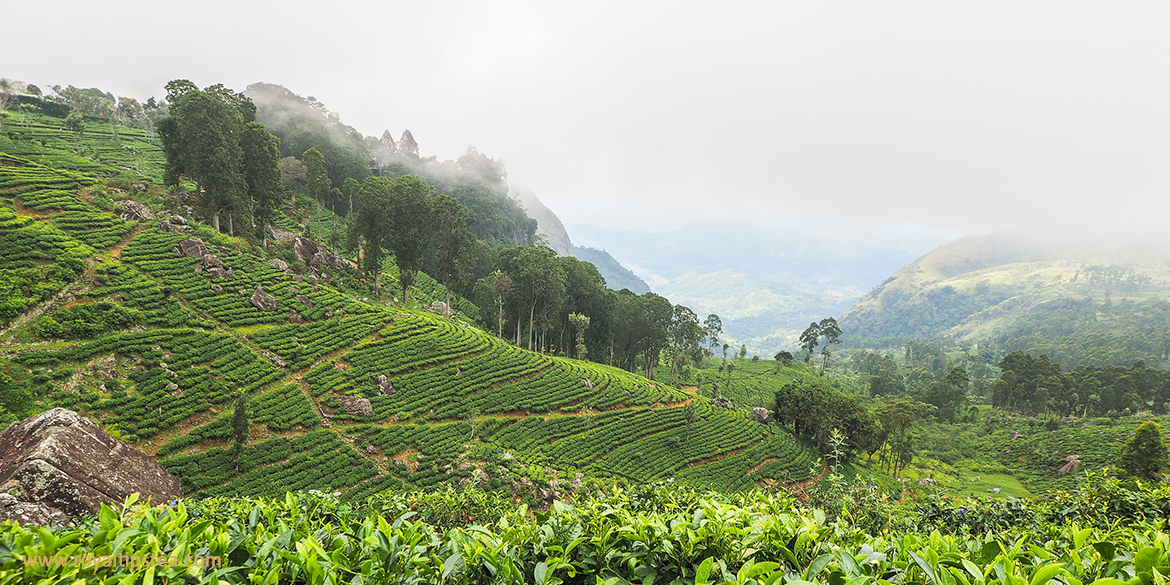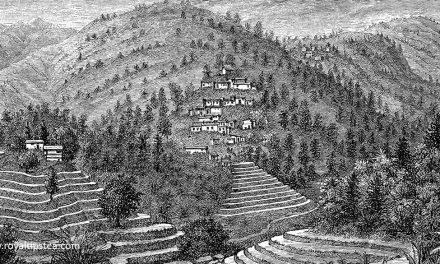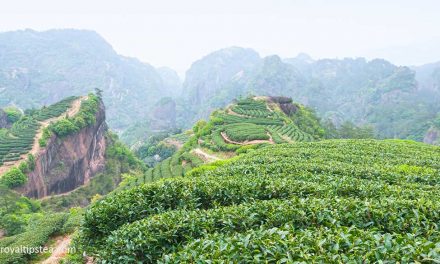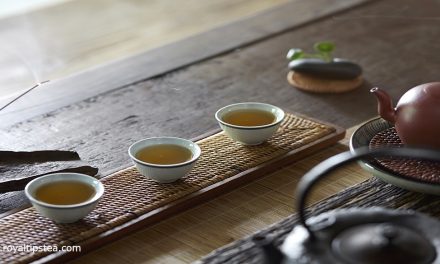Often referred to as “The Pearl of the Indian Ocean”, the island of Sri Lanka (former Ceylon) has been growing tea for more than 150 years. Lying close to the equator, the country’s benign climate allows the tea plants to push out their new leaf shoots all year long.
In the southern mountains, the contours of the hillsides are covered in every direction with undulating fields of tea, punctuated by tumbling waterfalls and plunging rivers, rugged outcrops of rock, elegant palm trees, bamboo stands and dense thickets of forest pines.
From the steamy south-western coastal plains, the tea gardens scramble up to altitudes of 1800 metres (6000 feet), ), where temperatures are cooler and misty clouds swirl gently around the highest peaks, protecting the tea from the glaring sunlight and bringing essential moisture to the plants.
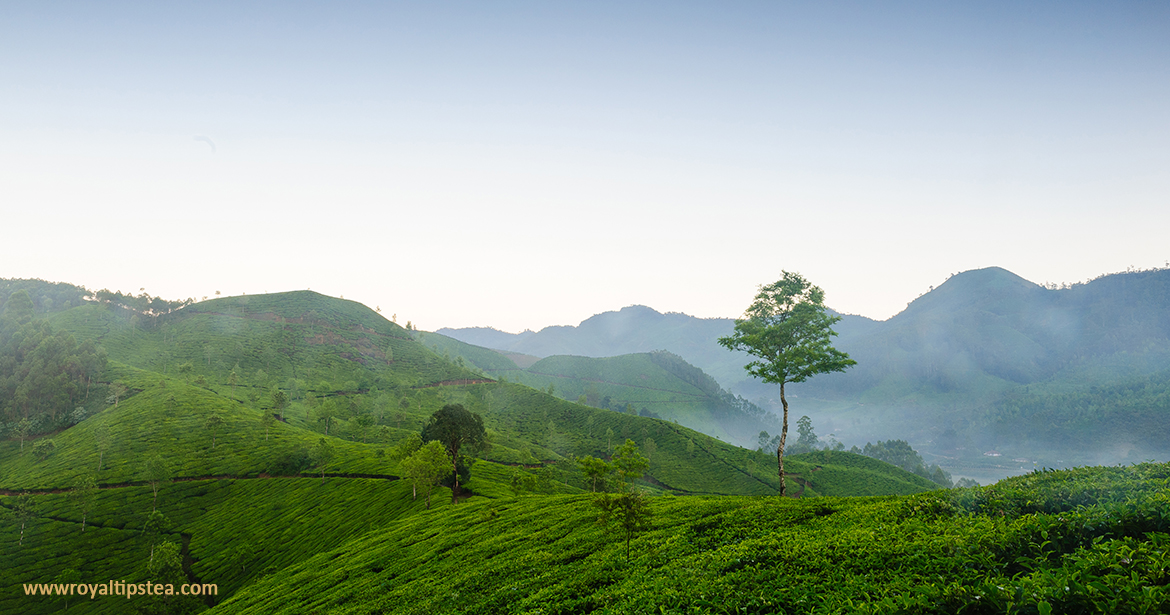
Ceylon teas are categorized by three different altitudes:
• Low-grown teas (from sea level up to 2000 feet)
• Medium-grown teas (between 2000 and 4000 feet)
• High-grown teas (above 4000 feet)There are currently seven tea growing regions in Sri Lanka:
Ruhuna, Sabaragamuwa, Kandy, Dimbula, Uva, Uda Pussellawa y Nuwara Eliya.
Each region produces teas with unique tastes and distinctive aromas.
Low-grown teas – Ruhuna and Sabaragamuwa
The climate in the low-growing regions of Ruhuna and Sabaragamuwa is hot and humid with plentiful rainfall throughout the year, and the bushes confidently produce a regular crop of new leaf buds. The majority of the teas grown here on the lower slopes are processed as Orange Pekoes (OP) and Flowery Orange Pekoes (FOP).
Their beautiful leaves are wiry, neatly-twisted, jet-black, and often mingled with silver or golden buds.
They brew to give rich red liquors that are full-bodied, powerful, juicy and strong, with hints of honey and chocolate.
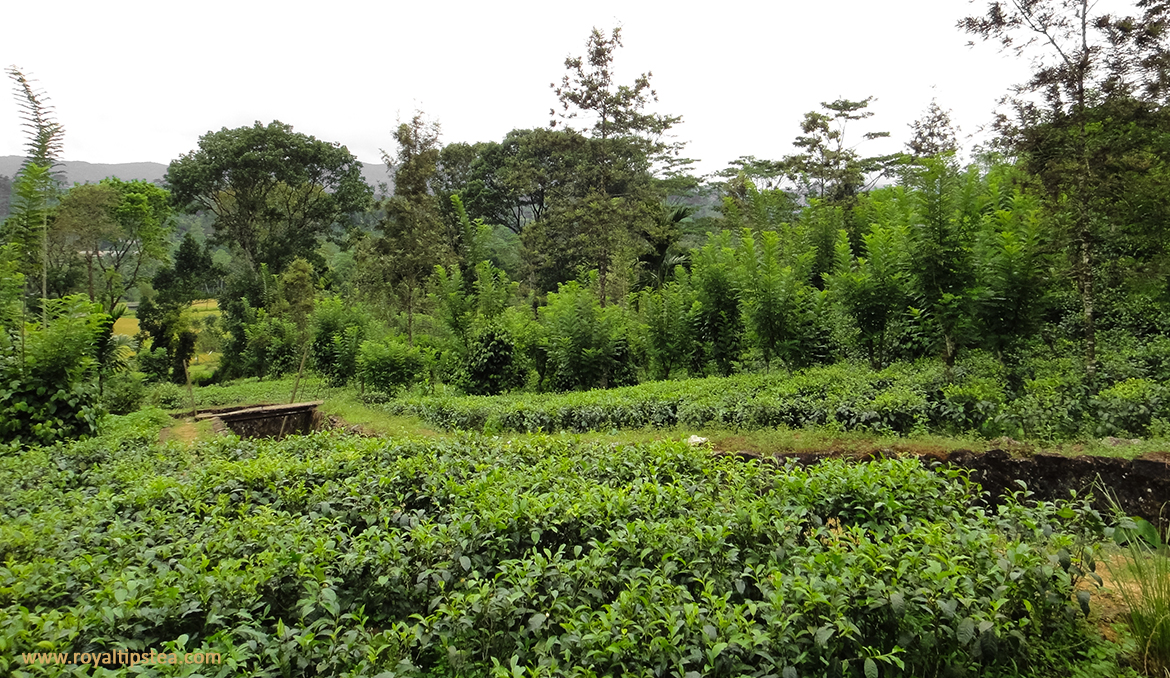
Medium-grown teas – Kandy
The ancient town of Kandy, once the island’s capital before Colombo took over that role, nestles in a valley on the western side of the Central Highlands. A beautiful and privileged place blessed with a generous nature.
A world heritage site declared by UNESCO in 1988, it was in this region that the first Ceylon tea gardens were established.
A Scot named James Taylor was working at Loolecondera Coffee Plantation in the 1850s when his employers encouraged him to diversify and try growing tea as well.
When his first tea plants thrived, he planted out a further 20 acres and, with little knowledge and no processing machinery, he started making black tea by hand on the verandah of his house and gradually developed his own machinery.
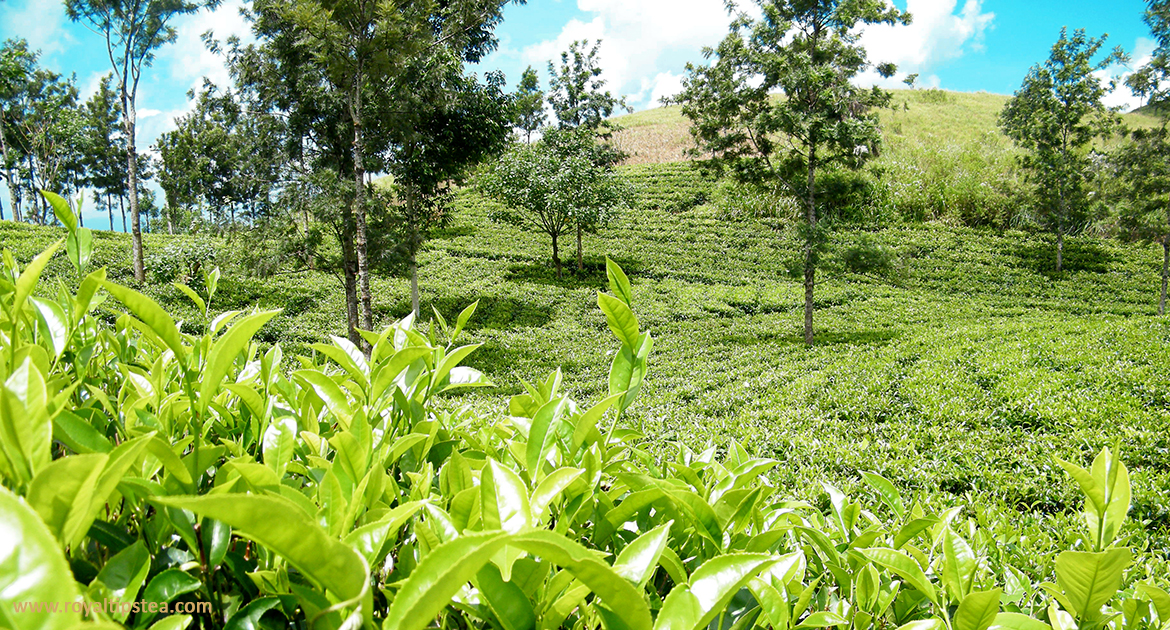
In 1873, he sent 23 lbs of black tea to London, where it was sold to great acclaim in the London tea auctions.
When Ceylon’s coffee crop was devastated by a virus in the early 1870s the coffee planters around Kandy were encouraged by Taylor’s success and started growing tea instead.
By 1890, Ceylon had become a very important tea producing country.
Large-leafed Kandy teas are strong and full-bodied, sometimes malty, while the smaller grades are more delicate and subtle.
High-grown teas – Dimbula, Uva, Uda Pussellawa and Nuwara Eliya
Sri Lanka has four high-growing regions (Dimbula, Uva, Uda Pussellawa and Nuwara Eliya), and the tea plants grow amongst mountain peaks that soar upwards to an altitude of more than 2500 metres (8281 feet).
Dimbula
Dimbula’s tea gardens sweep across the western slopes of the mountain range and clamber upwards though steep craggy hills and mountain passes towards the high Nuwara Eliya plateau.
Heavy monsoon rain gushes into the area from June to September and during those misty, warm months, the teas are full of flavour and aroma.
When the weather is cooler and dryer at other times of the year, the peak quality teas are lively, bright and fresh, with hints of oak, cypress, spice, citrus fruits, roses and jasmine. The higher the estate, the fresher and brighter the teas.
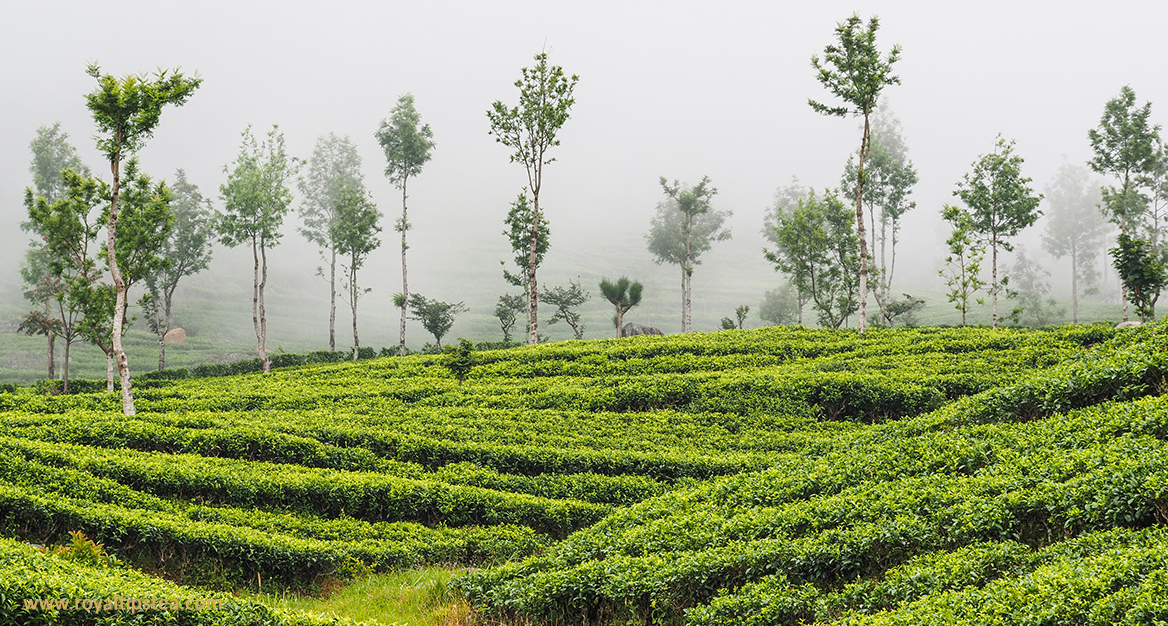
Uva and Uda Pussellawa
On the eastern side of the mountain range lie Uva and Uda Pussellawa, where the weather alternates between a period of heavy rain and high temperatures from October to June and a cooler season from July to September, when a powerful drying wind blows through the region.
The dessicating wind upsets the plants’ normal photosynthesis, and the contrast between cool nights and warm days causes a chemical change in the tea bushes.
The two factors together give the tea liquors a unique ‘wintergreen’ character.
During this period, the manufacturers change their style of processing (rolling the leaves more heavily and making smaller grades) to capture this prized medicinal taste and aroma.
Nuwara Eliya
The highest of all Sri Lanka’s teas grow in Nuwara Eliya, established as an important tea growing region in the 1870s.
The high altitude and the cool, sometimes frosty, air produce fine teas that are delicate, aromatic, subtle and complex.
The new leaf buds develop slowly and distill some of the aromas carried by the mountain breezes (eucalyptus, cypress and wild mint).
The golden sparkling liquors suggest ripe plums, spices and citrus fruits.
La elegancia y la delicadeza de té de Nuwara Eliya lo convierten en el favorito para beber todos los días.
